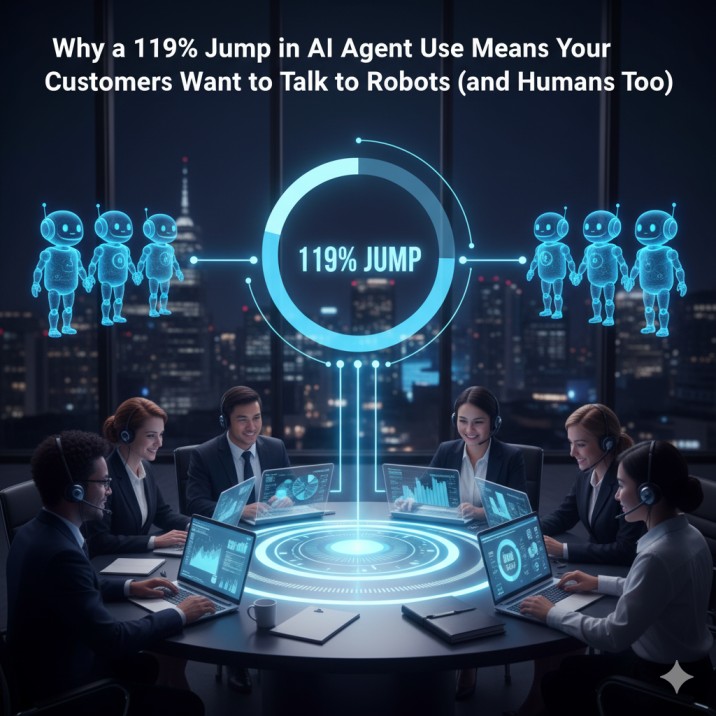Why AI Can Make Policy-Makers Feel Less Like Spreadsheet Operators and More Like Visionaries
Do you know?
Countries in the Gulf Cooperation Council (GCC) are placing heavy emphasis on AI to boost efficiency in public services and economic growth, estimating up to USD 91 billion extra growth from such efforts.
This trend shows that policymakers aren’t merely crunching numbers; they are beginning to steer toward broader vision and deeper impact by using AI for policymaking.
Imagine a policymaker who used to spend hours poring over spreadsheets with economic data, demographic tables, and projections. Now picture that person using a smart system that pulls data, spots patterns, and offers insights, and the policymaker gets to ask the bigger question: “How do we use this insight to shape a better future?” That shift from “spreadsheet operator” to “visionary leader” is exactly what using AI for policymaking enables.
From Data Overload to Strategic Insight
When policymakers rely on manual spreadsheets or basic databases, they often stay inside the box of existing frameworks—forecasting next year, tweaking current programmes. But with policy–maker AI tools, they can step out of that box. These tools can process huge volumes of data (economic, social, and environmental) and highlight trends, correlations, and potential unintended consequences.
For example, public policy data analysis powered by AI can pinpoint which neighbourhoods are likely to face service shortfalls, or where job-training programs may fail. Instead of reacting, a visionary policymaker can shape proactive strategies.
Suggested read: Ethics, Governance and Sustainability: The Bright Side of AI Leadership
This blog explores how leadership tied to AI adoption must consider ethics and governance, a great complement to using AI for policymaking.
Improving Government Efficiency with AI
Another way AI transforms policymaking is by boosting government efficiency. Think of routine decisions, approvals, and service-delivery workflows: AI can help automate parts, flag inefficiencies, and predict which processes are bottlenecks. That means policymakers spend less time pushing paperwork and more time envisioning improvements.
When governments adopt “government efficiency AI,”; policymakers can shift from operational managers to strategic designers: How do we redesign public services? Where do we invest next?
Because of this shift, policymakers feel less bound to rows and columns and freer to ask what the next big move should be.
Using AI Tools for Policymaking to Unlock Visionary Ways of Working
Let’s look at how policy-maker AI tools help a visionary strategy:
- Predictive analytics: Suppose a city wants to reduce traffic accidents. AI analyses decades of crash data, weather, and traffic flows
,and predicts where accidents will likely spike. The policymaker then designs a strategy targeting those zones. - Scenario modelling: Rather than debating manually if increasing public transport will reduce pollution, AI simulates thousands of ‘what-if’ paths. The policymaker chooses the best path.
- Real-time monitoring: With AI dashboards updating live, policymakers see emerging issues not months later. They can respond fast and change course as needed.
By embracing these tools, policymakers move away from simply managing spreadsheets and toward framing bold, long-term visions.
Suggested read: AI Leadership & Geopolitics: Global Shift
This blog dives into how AI is shifting not only operations but also global strategy — useful for anyone thinking about policy-making and vision.
Making Public Policy Data Analysis Work for Visionary Thinking
Public policy data analysis is central to the shift. But the tool matters less than the mindset. The mindset is “What is the future I want to build?” rather than “What numbers do I have to balance?” AI helps answer the first question by turning the second into insight.
Policymakers who let AI crunch large data sets find themselves freed up to ask: Which social outcomes matter? How do we design policy that shapes behaviours and conditions rather than simply respond to metrics?
For example, rather than simply tracking how many people are served by a program, AI-enabled policymakers might ask, “What long-term impact do we want on quality of life?” Which policies lead toward that, and which don’t?
Suggested read: 10 Steps to Regulate Unauthorized Use of AI: Lessons from Zelda Williams Plea
This blog offers practical steps about the governance of AI which dovetails with using AI responsibly in policymaking.
Visionary Policymaking Requires Responsible AI
Of course, using AI for policymaking carries real responsibility. Policymakers must ensure the AI models aren’t unfair, the data is inclusive, and the outcomes are transparent. When policymakers treat AI as a partner rather than simply a tool, they step into the role of visionaries with purpose.
Public policy data analysis done ethically builds trust. Policy-maker AI tools used with care enhance legitimacy. And when governments adopt a genuine “vision first” mindset, they can use AI to sculpt a future that aligns with social goals rather than simply cost-cutting.
Suggested read: Arab World’s First AI Ethical Code–What You Can Learn
This one provides insight into ethical frameworks that policymakers can apply when using AI for public policy.
The Big Picture: From Spreadsheet to Strategic Story-Maker
So, what changes when a policy-maker stops being tied to spreadsheets and embraces AI?
- The daily grind of reconciling numbers gives way to exploring future scenarios.
- Data-heavy tasks shift to algorithms; the human role becomes framing questions, setting direction, and interpreting implications.
- Rather than reactive decision-making, policymakers adopt proactive, visionary stances: What kind of city, region, or nation do we want in 10-20 years? How can online tools, AI insights, and data-driven models guide us there?
In short: Using AI for policymaking allows policymakers to become visionaries who choose where we go, instead of only responding to where we are.
Final Thoughts
If you are part of a government organisation, a public policy team, or even an individual with responsibilities in policy design, consider how adopting policy-maker AI tools, using public policy data analysis, and focusing on government efficiency AI can shift your mindset. The spreadsheets will still be there, but they will no longer define your role. You will define the role of the future.
And if you want to build your skills in this space, there is a way to get started: pursuing the AI Policymaker Certification from AI CERTs gives you the framework, the terminology, and the confidence to be at the front of visionary policymaking with AI.
Start transforming your approach and become the kind of policymaker who guides with insight and vision, rather than number-by-number. Enroll Today!
Recent Blogs

FEATURED
Small Business, Big Impact: How AI Can Level the Playing Field
November 12, 2025
FEATURED
Why Your Taxpayer-Dollar AI Needs a Nametag: Exploring Government AI Registries
November 12, 2025
FEATURED
How 6G + AI Will Change Our Everyday Lives, Not Just Our Screens
November 12, 2025
FEATURED
Why a 119% Jump in AI Agent Use Means Your Customers Want to Talk to Robots (and Humans Too)
November 12, 2025
FEATURED
Mondelez’s 40 Million Dollar Bet on Generative AI and Why Marketers Should Care
November 12, 2025

